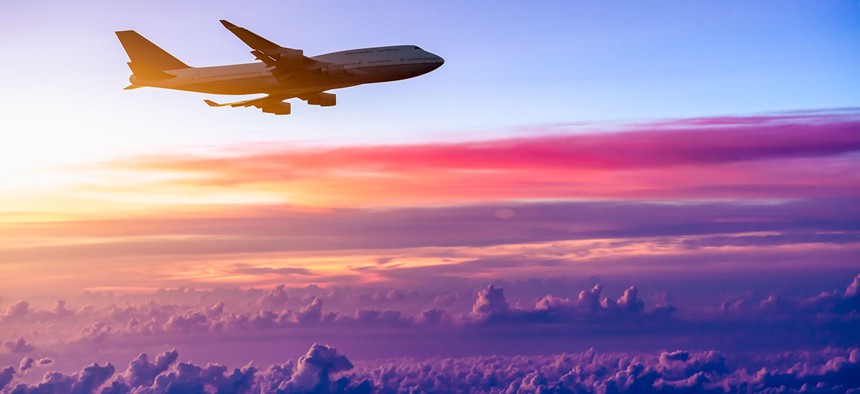NASA Research Has Uncovered Pockets of Airborn Radiation That Could Be Dangerous to Flyers

06photo/Shutterstock.com
The concept of low-level cosmic radiation in our atmosphere is nothing new, but this is something different.
A fear of flying is usually about the fear of crashing. Fortunately, plane crashes don’t happen very often: chances of dying in one are roughly 1 in 11 million (compared to 1 in 5,000 while driving).
But there are more esoteric risks that come with air travel—especially flying through pockets of radiation.
Late last year, scientists in NASA’s Automated Radiation Measurements for Aerospace Safety published a study detailing unanticipated pockets of higher levels of radiation—about twice the amount you get in a chest X-ray—at heights frequently encountered by commercial flights, around 35,000 to 39,000 feet (roughly 11 to 12 km). So-called ionizing radiation has the potential to deeply damage cells at the genetic level, which can cause cancer.
The concept of low-level cosmic radiation in our atmosphere is nothing new: Every time we fly, we get a slightly higher dose largely harmless, even for pregnant women and their unborn fetuses. Some commercial flight crew members do seem to develop melanoma, a particularly dangerous skin cancer, at twice the normal rate, probably because of prolonged exposure.
But this is something different. Researchers set up radiation monitoring equipment on 213 different commercial flights. In most cases, the radiation patterns looked like what they’d expect: Slightly higher doses as the planes cruised at higher altitudes, or across higher latitudes where more cosmic rays are present. In five instances, though, they saw spikes in radiation activity, at levels that were twice the expected amount.
The authors, based in the U.S., think these spikes are related to the Earth’s outer radiation belts. These are created by the Earth’s magnetic field and form a donut shape around the planet, with a hole running through the north and south poles. The poles capture extra radiation from the sun—usually in the form of electrons—which bounce around with other molecules in the atmosphere to create ionizing radiation.
Although flying through a few of these pockets of radiation probably won’t increase health risks, there is concern about their effects over time. W. Kent Tobias, the president of Space Environment Technologies in Los Angeles and lead author of the paper, thinks in the coming years, the U.S. will develop standards for radiation exposure for travelers to keep them safe. In the meantime, he and his team are working to develop ways of predicting these clouds so they can be avoided, just like thunderstorms or turbulent air.
NEXT STORY: Video: DARPA Tests Drone-Catching Prototype


